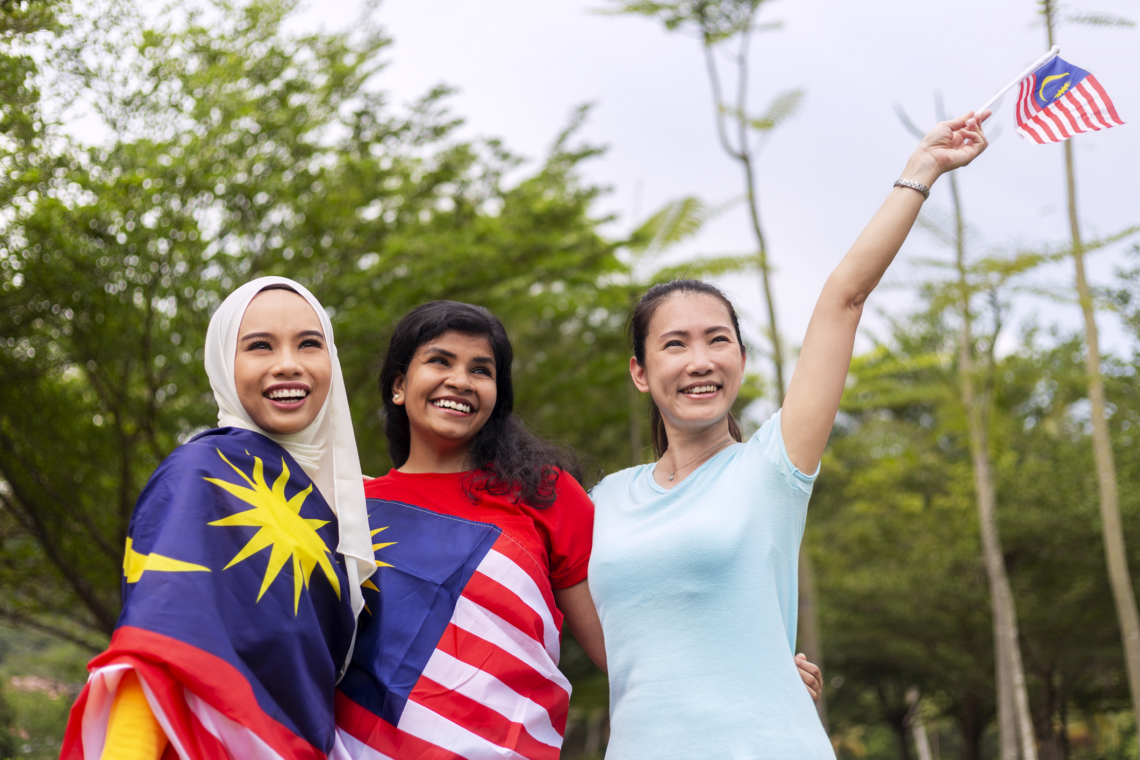A Muslim Traveler’s Guide to Halal Korean Food in Seoul
- November 26, 2025
- Food & Culture
Korea’s food scene is world-famous—rich broths simmering for hours, sizzling meats on the grill, chewy rice cakes bathed in sweet-spicy sauce, and... Read More

Malaysia is a land where cultures intertwine to create a vibrant and colourful tapestry of traditions. From the joyous festivities of Hari Raya Aidilfitri to the colourful lights of Deepavali, and from the rhythmic beats of Chinese New Year’s lion dances to the harvest rituals of Pesta Kaamatan, these celebrations offer a glimpse into the deep-rooted customs and beliefs of Malaysia’s diverse communities. Yet, beyond the well-known practices lies a treasure trove of lesser-known traditions and fascinating facts that truly bring these festivals to life.
In conjunction with this year’s Independence Day celebration, here are 20 intriguing facts about some of Malaysia’s most beloved cultural festivals:
During Chinese New Year, the exchange of mandarin oranges represents gold, symbolising wealth and prosperity. The phrase “giving gold” is a common blessing exchanged when giving these fruits.
In Sarawak, Hari Gawai is celebrated with a ritual called “Ai Pengayu,” a toast made with homemade rice wine called tuak. It’s a gesture of blessing and unity among the Dayak people.
(Source: www.iloveborneo.my )
Kolam, intricate patterns made from coloured rice or powder, are created at the entrances of homes during Deepavali. They are believed to welcome Lakshmi, the goddess of wealth and prosperity.
The lion dance, a staple of Chinese New Year, originally started as a ritual to scare away a mythical beast called “Nian” that terrorised villages in ancient China.
In rural areas of Malaysia, bamboo cannons (Meriam Buluh) are fired during Hari Raya Aidilfitri as part of the festive atmosphere. The loud booms are reminiscent of traditional celebrations.
(Source: Flickr @arifkori )
The Kadazan-Dusun people of Sabah celebrate Pesta Kaamatan with the Magavau ritual, where priests called Bobohizan offer prayers to appease the spirits and ensure a bountiful harvest.
During Chinese New Year, the tossing of Yee Sang (raw fish salad) is a communal activity where participants toss the ingredients high while shouting auspicious phrases, believed to bring good fortune.
Duit Raya packets often feature intricate and colourful designs that change each year, showcasing traditional Malaysian art and motifs. Collecting these beautifully designed packets has become a fun tradition for many, turning them into keepsakes that capture the spirit of each Hari Raya celebration.
(Source: www.nst.com.my )
Though often thought of as a single day, Deepavali is celebrated over five days, with each day holding unique significance, from the lighting of lamps to honouring siblings.
The Ngajat is a traditional dance performed during Hari Gawai, characterised by its dynamic movements and elaborate costumes, symbolising the strength and courage of the Dayak warriors.
(Source: www.buro247.my )
Each Hari Raya, Malaysians bake or purchase an array of traditional cookies like pineapple tarts, Kuih Makmur and Kuih Suji, each with its own unique flavour and story.
Read more about Malaysia’s top picks for Kuih Raya here:
https://myrehat.com/food-culture/malaysias-top-picks-for-kuih-raya/
Red is the dominant colour during Chinese New Year because it is believed to ward off evil spirits and bring good luck. Even the Angpaos (money packets) are red!
The highlight of Pesta Kaamatan is the Unduk Ngadau beauty pageant, which celebrates the beauty, grace and cultural knowledge of Kadazan-Dusun women.
The lighting of oil lamps during Deepavali symbolises the victory of light over darkness, good over evil, and knowledge over ignorance.
Lemang, glutinous rice cooked in bamboo, is a popular delicacy during Hari Raya. The cooking process, which involves hours of slow-roasting over an open fire, brings families together in preparation.
(Source: www.mymallmalaysia.my )
A less-known practice during Chinese New Year is the offering of food, incense and joss paper to ancestors, inviting them to join the family celebrations.
The Miring Ceremony is an important ritual in Hari Gawai, where offerings are made to the spirits to thank them for a good harvest and to bless the community for the coming year.
(Source: www.libur.com.my )
On the morning of Deepavali, many Hindus perform an oil bath, a cleansing ritual believed to purify the body and soul, setting the tone for the day’s celebrations.
(Source: sejkssrt6t2u6.wordpress.com)
Applying henna on hands and feet is a popular tradition during Deepavali, especially among women. These intricate designs are believed to bring good luck and blessings, and the practice has roots in ancient customs celebrating beauty and femininity.
On the eve of Hari Raya Aidilfitri, the Eid Takbir (a special chant glorifying Allah) is recited in mosques and homes across Malaysia. The Eid Takbir is a heartfelt expression of gratitude and joy, signalling the end of Ramadan and the beginning of the Hari Raya celebrations. Hearing the Takbir echoing through neighbourhoods adds a deeply spiritual and emotional element to the festivities, marking the holiness and significance of the occasion.
(Source: www.nst.com.my)
Malaysia’s cultural festivals are more than just celebrations—they are a testament to the nation’s spirit of unity in diversity. Each festival, with its unique rituals and customs, contributes to the rich cultural mosaic that defines Malaysia. To explore more about Malaysia’s unique cultures and hidden gems, visit myrehat.com/cerita/ and dive into the fascinating stories that make this country truly special.
Happy 67th National Day, wishing everyone a joyous and proud Merdeka celebration as we honour our shared history and look forward to a bright future together. Enjoy 15% off for all accommodations and outdoor activities booking on www.myrehat.com!